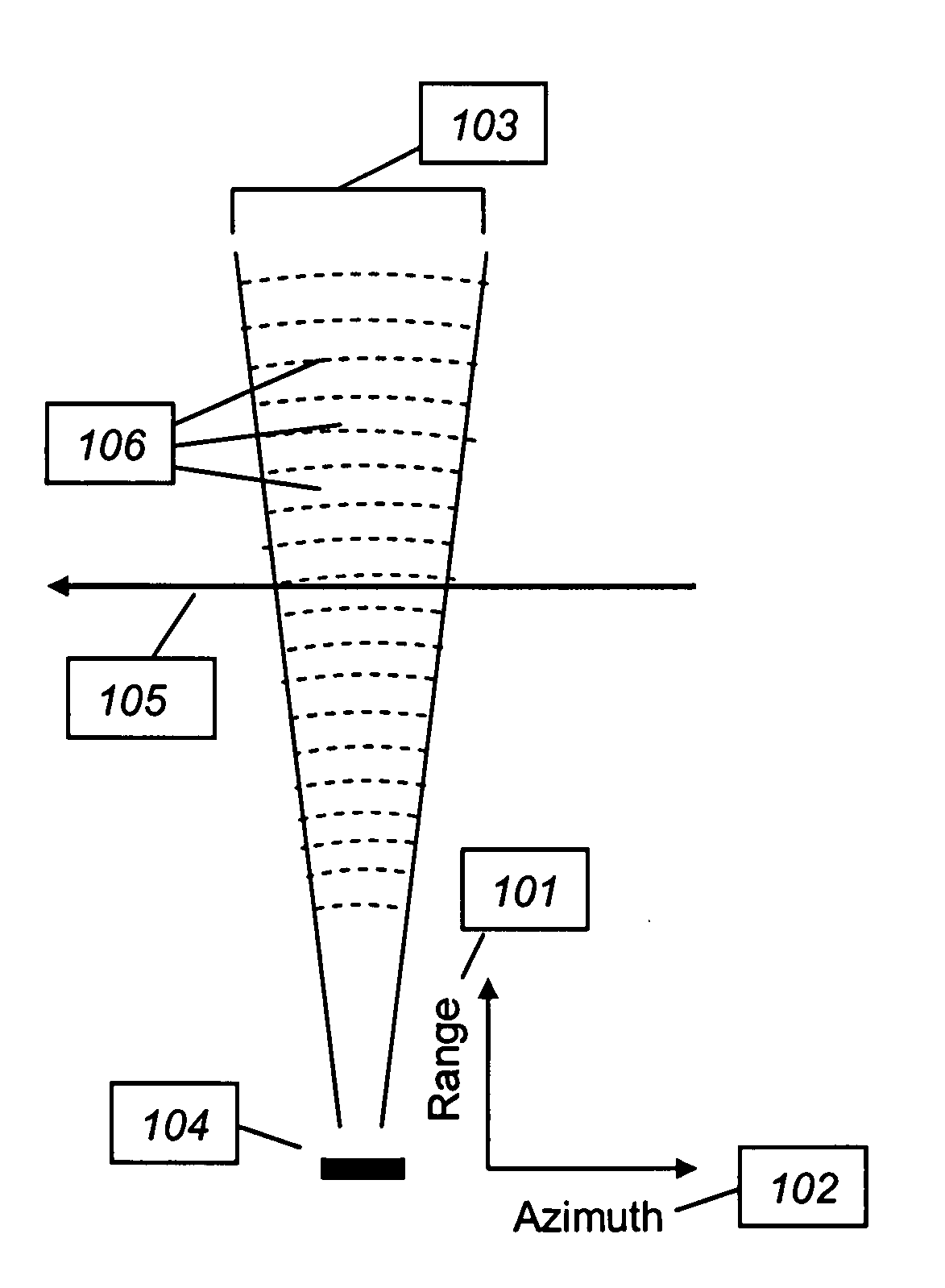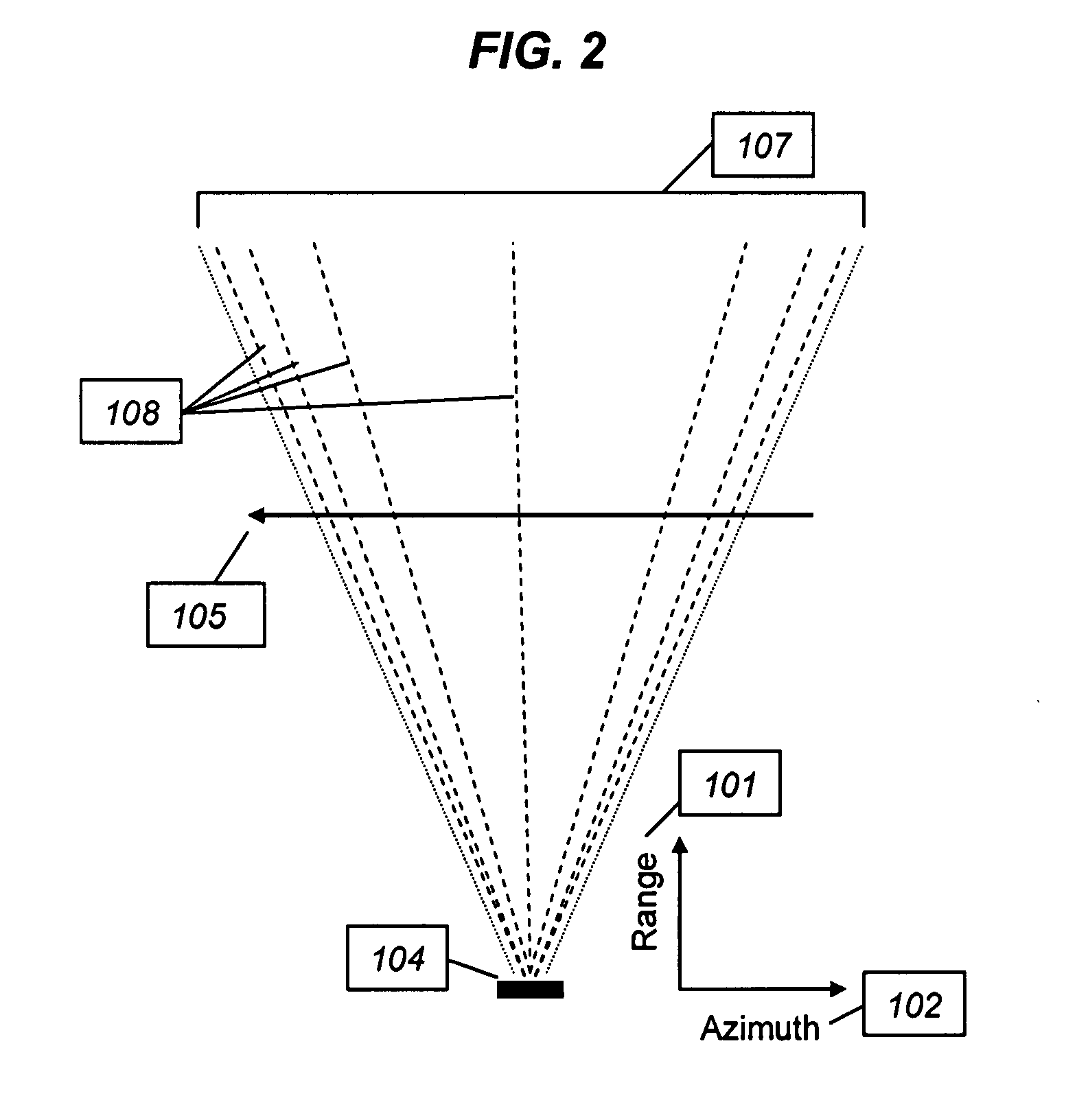Beam phase modulation for improved synthetic aperture detection and estimation
a synthetic aperture and phase modulation technology, applied in the field of beam phase modulation for improving synthetic aperture detection and estimation, can solve the problems of relatively inaccurate azimuth rate measurements, and achieve the effects of improving signal-to-clutter ratio, suppressing undesirable ambiguities, and improving the accuracy of range rate and azimuth rate measurements
- Summary
- Abstract
- Description
- Claims
- Application Information
AI Technical Summary
Benefits of technology
Problems solved by technology
Method used
Image
Examples
Embodiment Construction
[0049]The invention is to replace beam patterns with no phase variation in synthetic aperture systems (prior art) with beam patterns that have appropriate nonlinear phase modulation (or phase coding). Appropriate phase modulation / coding improves estimation / detection performance for broadside stripmap synthetic aperture radar (SAR) and for other synthetic aperture processors (squint stripmap SAR, SAS, ISAR, and ISAS). The ISAS application includes coherent processing of multiple echoes in Doppler ultrasound. Phase modulated beam patterns can provide significant improvements in estimation / detection performance, as expressed by ambiguity function properties, lower bounds on estimation errors, and signal-to-clutter ratio.
[0050]Appropriate phase coding / modulation of the combined transmit-receive beam pattern is accomplished by coding / modulation of the phase of an array shading (element weighting) function for transmit and / or receive arrays. For situations where the motion between the tar...
PUM
 Login to View More
Login to View More Abstract
Description
Claims
Application Information
 Login to View More
Login to View More - R&D
- Intellectual Property
- Life Sciences
- Materials
- Tech Scout
- Unparalleled Data Quality
- Higher Quality Content
- 60% Fewer Hallucinations
Browse by: Latest US Patents, China's latest patents, Technical Efficacy Thesaurus, Application Domain, Technology Topic, Popular Technical Reports.
© 2025 PatSnap. All rights reserved.Legal|Privacy policy|Modern Slavery Act Transparency Statement|Sitemap|About US| Contact US: help@patsnap.com



